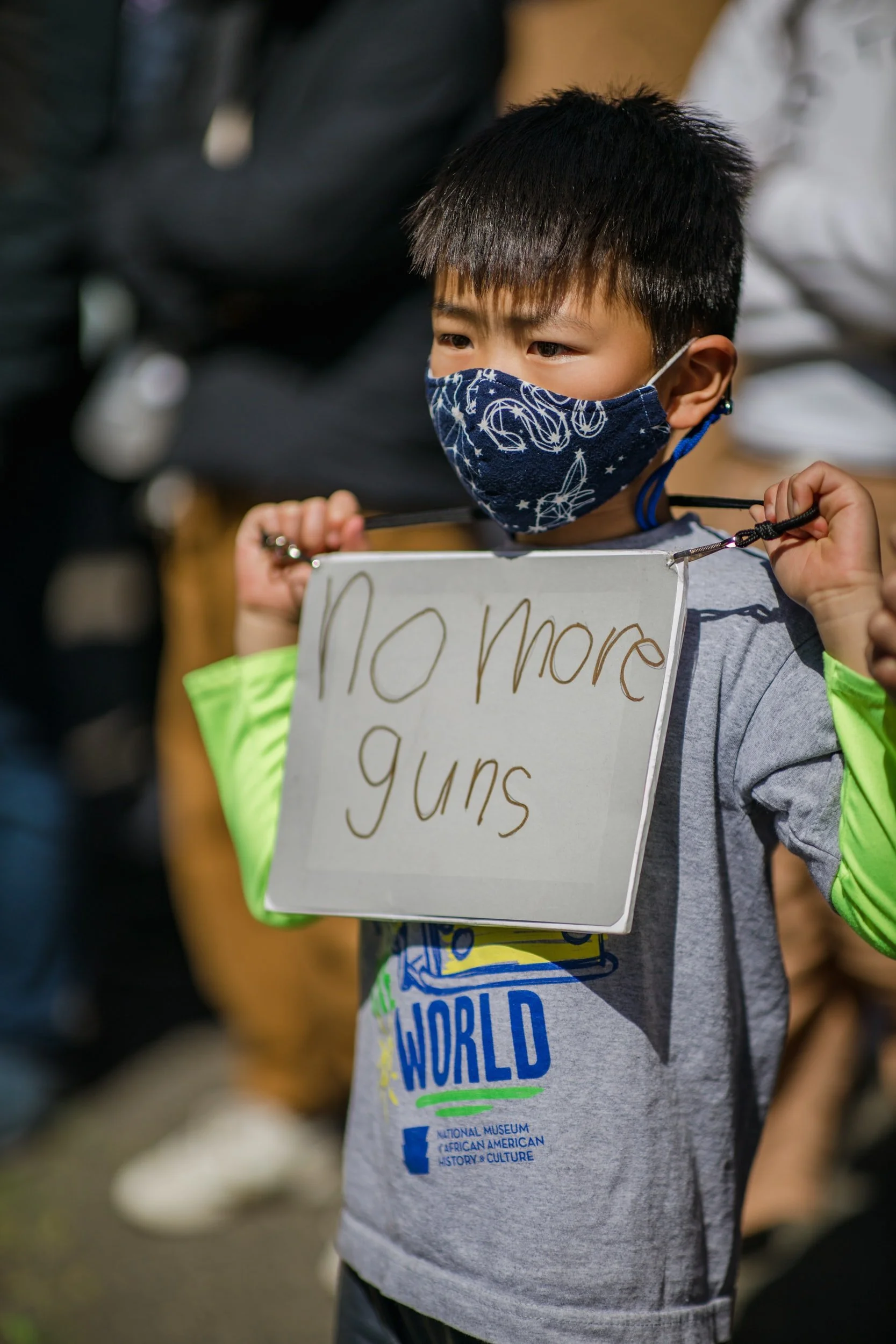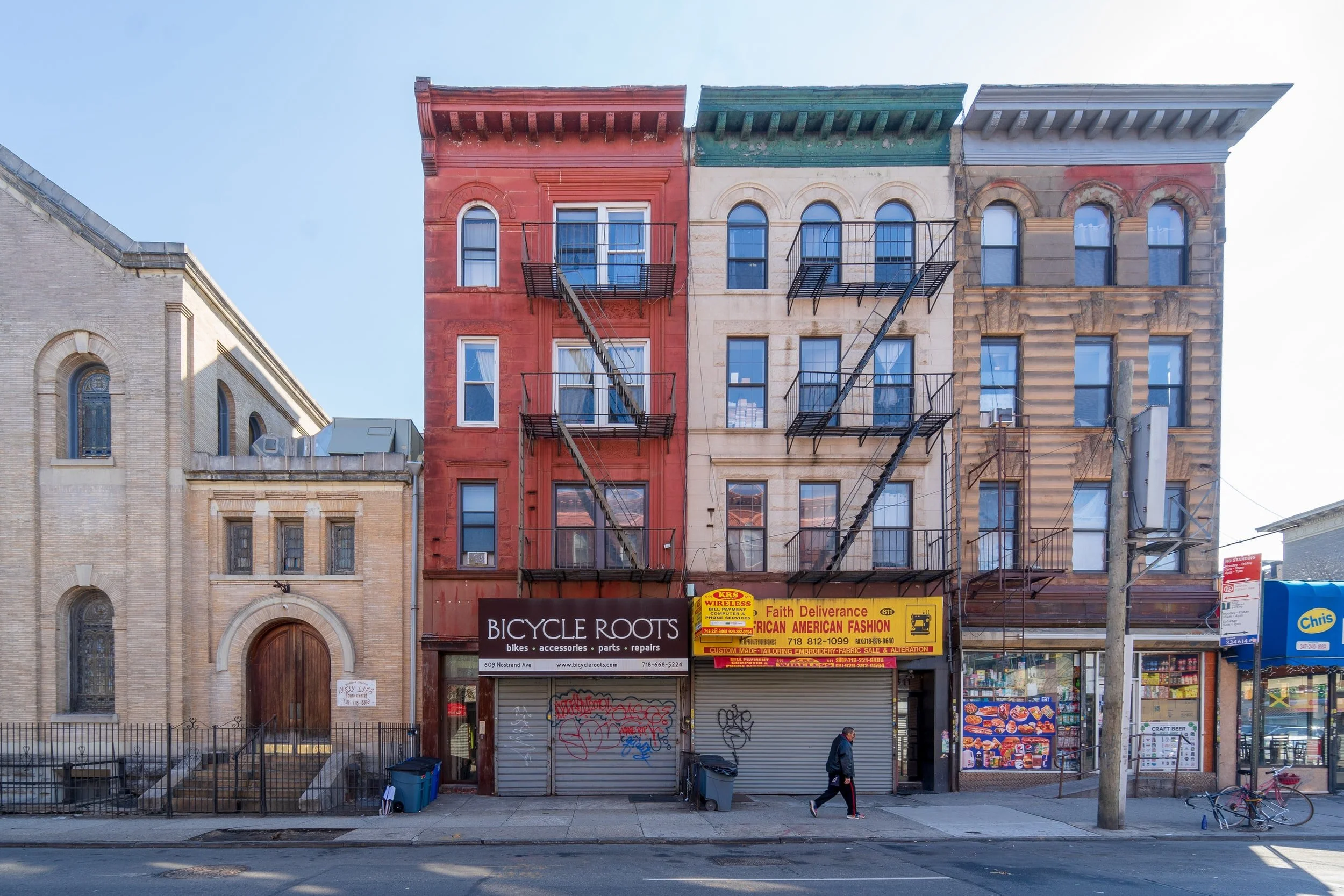Biden’s Policies Aren’t the Only Possible Solution to America’s Gun Violence Epidemic
Biden’s Policies Aren’t the Only Possible Solution to America’s Gun Violence Epidemic
By Christina Carrega, Capital B, June 1, 2022
word count: 1981
As the number of mass shootings has surged beyond the number of days in 2022, President Joe Biden addressed the country in a televised primetime speech Thursday to advocate for policy solutions and urge lawmakers to “finally do something” about the nation’s gun violence epidemic.
Following the massacres of 10 Black people in New York, 19 children in Texas and four employees at a hospital in Oklahoma, Biden told viewers that the Second Amendment is “not absolute.” He called for raising the minimum age to purchase a firearm from 18 to 21, strengthening background checks, and passing “red flag” laws that allow authorities to temporarily limit gun access for people who pose a threat to themselves or others.
Biden is also calling for a ban of assault-style rifles and high-capacity magazines. The gunmen behind the New York and Texas shootings were 18 years old, and while too young to buy alcohol, they purchased their assault-style rifles legally. The now-deceased Texas killer made at least two trips to a firearms dealer and seamlessly purchased long guns shortly after his birthday. The gunman from Oklahoma’s shooting purchased an AR-15 style rifle hours before he killed two doctors and two others on May 31 before he died by suicide.
“Guns are the number one killer of children in the United States of America. The number one killer. More than car accidents. More than cancer,” Biden said Thursday, sourcing a recent U.S. Centers for Disease Control and Prevention report. “For God’s sake, how much more carnage are we willing to accept? How many more innocent American lives must be taken before we say ‘enough’? Enough.”
GET CAPITAL B IN YOUR INBOX
Sign up for our newsletter and get more news and analysis from our reporters weekly.
Email AddressSubmit
After every senseless mass shooting, some lawmakers utter the overused phrase of “thoughts and prayers” while others demand stronger gun laws. As lawmakers teeter-totter in Congress, Black and brown communities continue to fall victim to gun violence disproportionately.
American deaths from gun-related injuries rose to the highest level on record in 2020, the most recent data available from the U.S. Centers for Disease Control and Prevention. The agency reported that more than 45,000 people were killed — 54% were suicides and 43% were murders.
Black men were far more likely to become victims, with a rate of nearly 35 firearm-related deaths per 100,000 people. Black women also had higher rates of death than women of other races and ethnicities.
Most alarming, 9.5 out of every 100,000 Black children and teens were killed with a gun — “a rate four times higher than the rate for White children and teens,” according to 2015 data analyzed by the Children Defense Fund. A Black child or teen was killed with a gun every 7 hours and 25 minutes, the report found.
While background checks have dominated the gun-control conversation, other solutions also are getting attention. Here’s a look at a few that anti-violence advocates and elected officials have been touting:
Gun buyback programs
Gun buyback programs have been implemented in cities across the country, including communities in New York, Chicago and Boston. The don’t-ask-don’t-tell systems allow anyone to walk into a designated location and turn in any form of an operable or inoperable firearm in exchange for a monetary amount.
These gun collection events have been in existence since the 1970s. In 1974, more than 13,000 guns were turned in in Baltimore over a three-month period, for $50 each.
The programs are usually held in collaboration with local prosecutor offices and police departments. For example, the Brooklyn District Attorney’s Office along with the New York City Police Department have hosted several gun buyback events over the past decade, and at one event collected close to 300 weapons.
Brooklyn District Attorney Eric Gonzalez said his office has conducted two gun buyback programs this year and believes that “constant engagement with communities to prevent violence is bearing fruit.”
Gonzalez said in a statement leading up to the office’s second gun buyback event that shootings in Brooklyn have decreased “by nearly 25% so far this year, following a 20% drop in 2021.” The event resulted in 69 recovered firearms — the largest collection under Gonazlez’s leadership, according to Oren Yaniv, a spokesman for the prosecutor’s office.
The May 21 event took place at Emmanuel Baptist Church in Clinton Hill, where anonymous contributors were offered $200 bank cards and an iPad per gun or assault rifle, while supplies lasted. Participants who turned in rifles, shotguns, and air guns received $25 per gun, up to a maximum payout of $600. The first event netted 39 weapons.
It’s a drop in the bucket when considering that there are more guns circulating in the U.S. than there are people. According to the Small Arms Survey, there are an estimated 393 million privately owned guns nationwide, or about 120.5 weapons per 100 Americans.
There’s little information to show that gun buyback programs have been effective in combating gun violence in the U.S., because they “have occurred infrequently and on a relatively small scale,” according to Gun By Gun, a nonprofit organization that advocates for gun buyback programs. But the group noted that a mandatory gun buyback program in Australia in the 1990s, which pulled more than 600,000 guns off that country’s streets, was followed by a substantial decline in homicides and suicides.
The uniquely lenient gun laws in the U.S. also could counteract efforts to reduce the prevalence of firearms on American streets. In an op-ed this month for the New York Daily News, Gonzalez expressed concern that his office’s efforts to reduce gun-related crimes may be in vain if the U.S. Supreme Court overturns a New York state law that “restricts the concealed carrying of handguns to those who can show a special need.”
“The court’s decision, which would impact more than 80 million Americans in states with similar laws, could flood our city with an influx of legal guns, exacerbating already unacceptable levels of violence,” he wrote. “More guns in our urban neighborhoods would be especially devastating to Black and Brown communities, who already suffer disproportionately from gun violence.”
Community activism
While officials debate gun laws and attempt to reduce weapons on the streets, community activists have used boots-on-the-ground efforts to raise awareness and prevent gun violence.
Every first weekend in June, in recognition of National Gun Violence Prevention Day, people across the country wear orange while participating in demonstrations and community service events, a campaign that started in remembrance of 15-year-old Hadiya Pendleton, who was fatally shot in 2013 on a Chicago playground.
In Georgia, 100 Black Men of Atlanta Inc. relaunched an anti-gun violence campaign in April that uses billboards and social media awareness, as well as collaborations with the public school system, to drown out the sound of gunshots with a flood of messaging against gun violence.
The Black Child Legacy Campaign, based in Sacramento, California, was established after a 2013 Blue Ribbon Commission report found that firearms were used in the deaths of 70% of Black children who were killed by a third-party (someone other than their primary caregiver).
The organization launched efforts to provide job training, violence prevention, and community service for “high risk” youth.
The BCLC touts the work of the Office of Neighborhood Safety in Richmond, California, which reported a 71% reduction in gun violence between 2007 and 2016 by using individuals who were once in the criminal justice system as “neighborhood change agents” who intervene when interpersonal conflicts arise, providing nonviolent solutions and resources to prevent violence.
In New York City, the 14-year-old community organization Save Our Streets (S.O.S.) also has used a boots-on-the ground approach to reduce conflict and all forms of violence, which organizers say contributed to a reduction in shooting victims in the Bronx.
As with mass shootings, there are typically red flags that proceed street violence, said James Brodick, director of community development and crime prevention for the Center for Court Innovation, which operates S.O.S. That’s when members of S.O.S., who are from the community and have built trust, step in to defuse the situation before police get involved.
“The people who shoot are getting younger and younger, which is really unfortunate,” Broderick said. “They don’t understand the ramifications of what they’re doing or they feel such a sense of hopelessness that they’ll say, ‘I had nothing to lose and actually the gun is giving me power in my community.’ ”
Brodick said communities need to provide young people with more opportunities that prevent them from feeling like they have nothing to lose, but everything in life to experience and gain.
“Until we make long-term, deep investment in addressing issues around trauma, addressing issues around economic mobility, we’re going to have the same conversations over and over and our communities will continue to be overpoliced,” Brodick said.
Suing gun manufacturers
Guns that were legally or illegally purchased or trafficked contributed to more than 19,000 homicides in 2020, according to the CDC. Historically, when a product has been found to cause harm or death to an individual, it is taken off the shelves or recalled — yet federal law prevents gun manufacturers from being held liable if their product is used in a crime.
On Thursday, Biden called for repealing the immunity that protects manufacturers and gun retailers from being held liable. Biden said he also believes gun owners should be held responsible if they haven’t kept their firearms locked away in a safe, as in the case of Ethan Crumbley, whose parents were also charged for giving their son easy access to their firearms before he killed four students at a Michigan high school.
There are signs that a shift could be coming. In 2019, the U.S. Supreme Court gave the families of the 2012 Sandy Hook Elementary School massacre the greenlight to sue Remington, the gun manufacturer of the rifle used by the gunman. This February, the company settled the lawsuit with the families of 20 first-graders and six teachers victimized by the shooting for $73 million.
The families told The Associated Press that their focus was “on preventing future mass shootings by forcing gun companies to be more responsible with their products and how they market them.”
Gun violence not only affects the victims directly involved with a shooting — it financially impacts the broader community, which picks up the tab for medical bills, mental health care, and other consequences.
Everytown for Gun Safety, a nonprofit gun violence prevention organization, published a study in February 2021 that found that “federal, state, and local governments are spending a combined average of $34.8 million each day to deal with the aftermath of gun violence across the country.”
Ronald Adrine, a board member with anti-violence organization Futures Without Violence, said he hopes the Supreme Court will continue to move in the direction of accountability for the damage guns cause, but “given the direction that this Supreme Court is going in, I don’t hold out a lot of hope in the short term.”
When lawmakers offered “thoughts and prayers” after Sandy Hook, Adrine said he “pretty much gave up hope” that any gun control laws would ever happen in this country.
“I think that eventually this carnage is going to get to the point where the vast majority of American citizens, who have already let it be known that they want some sort of common sense approaches to gun control, will assert themselves and form some kind of organization or movement that will actually be able to counterbalance the passionate organization of the small number of folks who want no gun control,” said Adrine, a former municipal court judge based in Cleveland. But, he added, “Until that happens, we’re not gonna see anything that’s going to turn this around.”






